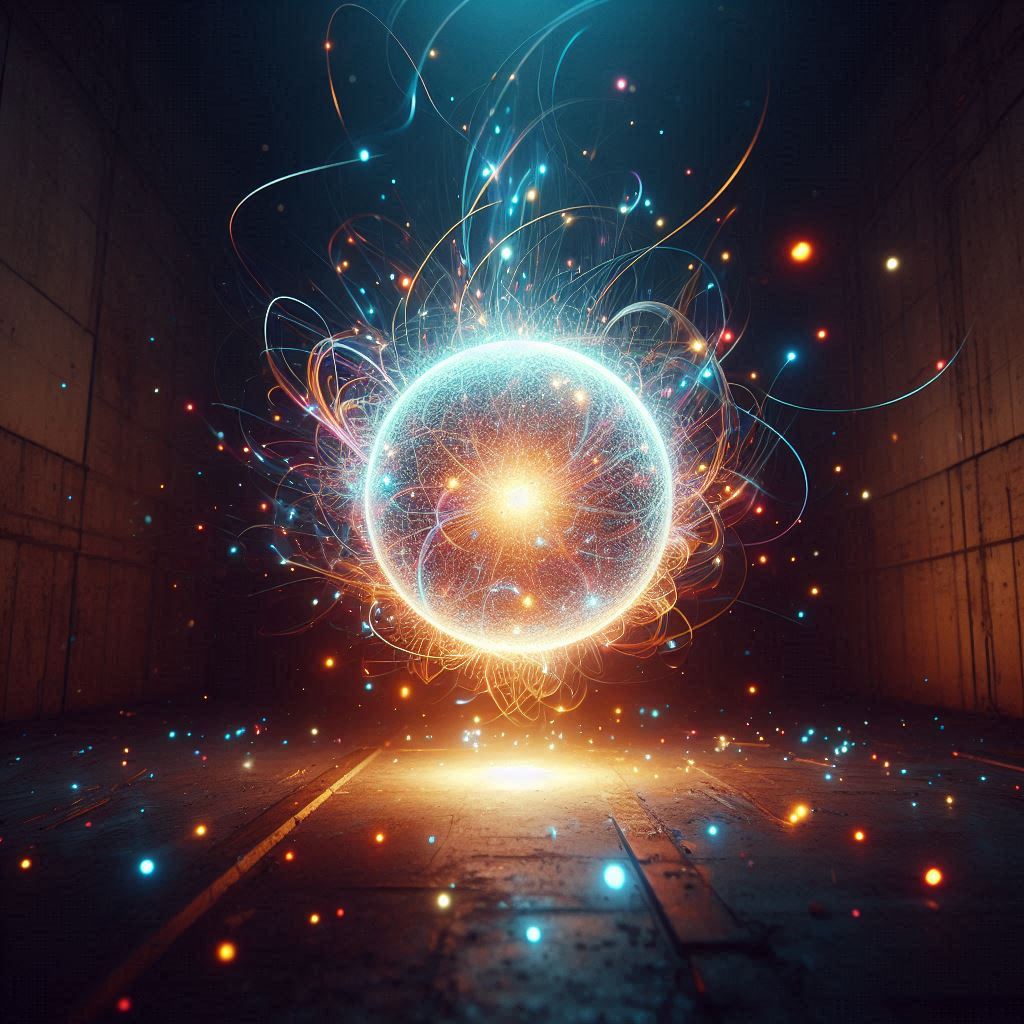Energy is one of the most fundamental concepts in physics, underpinning everything from the motion of planets to the flicker of a candle. We understand energy as the capacity to do work, whether it’s moving objects, generating heat, or producing light. But a question often arises: can energy exist by itself, bare and independent, in the universe? Or is it always tied to some physical entity?
Energy: The Invisible Force
Before tackling the question of “bare energy,” it’s essential to understand what energy is. Energy manifests in many forms: kinetic energy in a moving object, potential energy stored in a stretched spring, thermal energy in a hot cup of coffee, and electromagnetic energy in a beam of light. But in all these examples, energy is associated with something physical—an object, a field, or a system.
Einstein’s famous equation:
E = mc2
tells us that energy and mass are interchangeable. This means that even massless particles like photons (particles of light) carry energy. But does this mean energy can exist on its own, without any physical medium or manifestation?
The Concept of “Bare Energy”
The idea of “bare energy” would imply energy existing independently, not tied to any matter, field, or physical process. However, in the context of modern physics, this concept is more abstract than practical. Energy, as we understand it, is always a property of something—whether it’s a particle, a field, or even the vacuum of space.
Let’s explore some scenarios that come close to the idea of bare energy:
1. Vacuum Energy: The Energy of Nothingness
The vacuum of space, which we often think of as “empty,” is anything but empty. According to quantum field theory, the vacuum is filled with fluctuating fields that constantly create and annihilate particle pairs. This activity gives rise to vacuum energy, an intrinsic energy that exists even in the absence of matter.
Vacuum energy is a leading candidate for explaining dark energy, the mysterious force driving the accelerated expansion of the universe. While vacuum energy isn’t “bare” in the traditional sense—it’s tied to quantum fields—it represents energy that exists without any physical particles in the usual sense.
2. Photons: Energy Carriers Without Mass
Photons are the fundamental particles of light, carrying electromagnetic energy across the universe. They are massless, meaning they don’t have any rest mass, but they do carry energy and momentum. When we think about light traveling through the vacuum of space, we’re essentially considering energy that exists independently of matter.
However, photons are not “bare energy” in the purest sense—they are quanta of the electromagnetic field. Their existence depends on the underlying structure of space and the laws of quantum electrodynamics. Still, they come close to the idea of energy existing with minimal physical manifestation.
3. Gravitational Waves: Ripples of Pure Energy
Gravitational waves are ripples in spacetime caused by massive objects like merging black holes or neutron stars. These waves propagate through the universe, carrying energy across vast distances. Unlike photons, gravitational waves are not particles but disturbances in the fabric of spacetime itself.
Gravitational waves represent a form of energy that isn’t tied to matter in the traditional sense but instead arises from the geometry of spacetime. They are perhaps one of the closest examples of energy existing in a form that’s not immediately tied to any tangible physical entity.
4. Potential Energy in Fields: Energy Without Immediate Physical Form
In physics, potential energy is energy stored in a system due to its position or configuration. For example, a stretched spring has potential energy. In more abstract terms, fields—like the electromagnetic or gravitational fields—store potential energy.
For instance, the energy stored in an electric field between two charged plates exists even when the plates are stationary. This energy isn’t immediately tied to movement or heat but is “waiting” to be released if the configuration changes. While not exactly “bare,” it shows how energy can exist in a latent form, independent of immediate physical processes.
Energy in the Universe: Always Tied to Something
While the idea of “bare energy” is intriguing, the reality is that energy in our universe is always associated with something—whether it’s a particle, a field, or the fabric of spacetime itself. The examples of vacuum energy, photons, gravitational waves, and potential energy show us that energy can exist in very subtle and sometimes counterintuitive forms, but it’s never truly “bare.”
Even the most abstract forms of energy are linked to the underlying structures and laws of the universe. In this sense, energy is a fundamental property of the cosmos, deeply woven into the fabric of reality. It doesn’t exist in isolation but is always part of the grand tapestry that makes up our universe.
Energy as the Universe’s Lifeblood
Energy is the lifeblood of the universe, flowing through every process and interaction. While it may not exist “bare” in the strictest sense, energy in its various forms—from photons to gravitational waves—demonstrates the incredible ways it can manifest. These manifestations remind us that while energy may be intangible and invisible, it is never without a host. It is always bound to the very fabric of the universe, driving the dynamics of everything we observe.
In exploring these ideas, we gain a deeper appreciation for the fundamental role energy plays in the cosmos, reminding us that even the most abstract concepts in physics have profound implications for how we understand the nature of reality.
